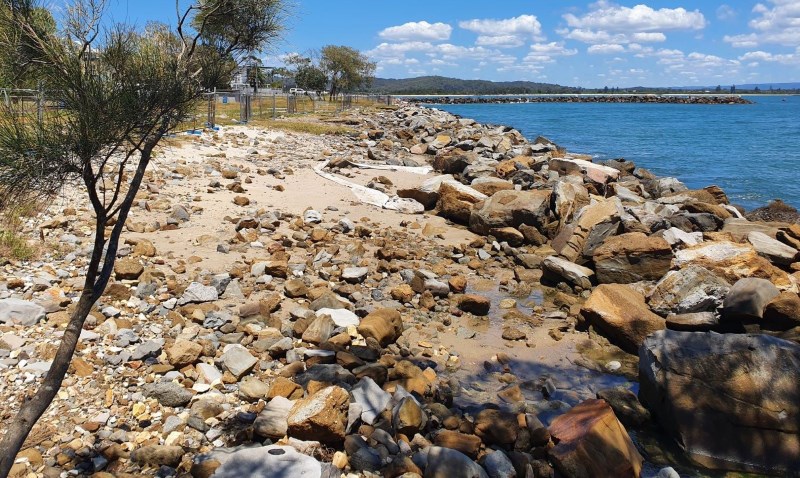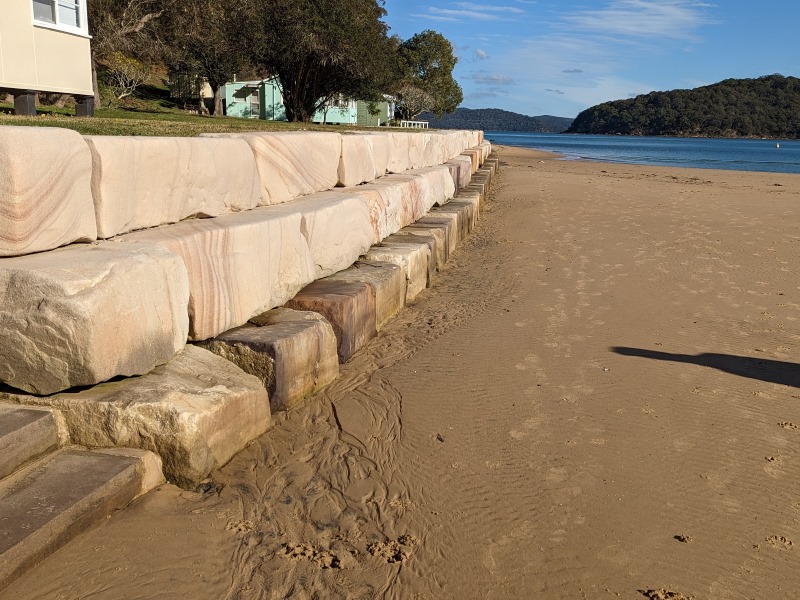Breakwater governance and management
 Erosion of foreshore behind a rock breakwall requiring repair.
Erosion of foreshore behind a rock breakwall requiring repair.
Overview
- rock walls
- concrete walls
- sheet pile
- geotextile sandbags
- groynes and other training works.
- Identifying legacy breakwaters where responsible authority is unknown, unclear or contested.
- Considering social, environmental, cultural and economic values associated with these breakwaters. For example, what do they protect, and what risks are associated with them?
- Assessing the condition of breakwaters, where necessary, to inform decision making.
- Establishing clear principles for deciding on the responsible authority for breakwaters (such as local councils, Transport for NSW, Crown Lands, or other) considering the history of the structures, as well as lessons learned from previous decisions and current case studies.
- Working with councils and other agencies to apply these principles in high-priority situations.
- Facilitating improved management of breakwaters by including them in appropriate policies and programs of the responsible authority.
Why is this project important?
Historically, breakwaters (such as rock walls, groynes and other training works) were constructed for various reasons by government or private organisations, some of which may no longer exist. As a result, the management of these ‘legacy’ breakwaters is often unclear.
Some of these breakwaters have deteriorated over time and pose safety risks, are no longer suitable for their intended purpose, or may even be harmful to the environment. Also, some breakwaters were never officially authorised, while others may not be following the conditions of their licences.
This has led to a situation where the responsibility for managing certain breakwater structures is uncertain. The goal of this project is to establish clear authority and responsibility for these breakwaters in estuaries so that they can be managed appropriately.
Although breakwaters sit on Crown land, they are not necessarily the responsibility of Crown Lands to manage. In fact, many breakwaters are already managed by local councils or Transport for NSW.
A vital step to better manage some of the other legacy breakwaters is to first clarify who is responsible for managing them.
For the purpose of this project, we consider breakwaters to include:
What we are doing
This information will assist authorities responsible for the breakwaters to make better decisions about their management. For example, this information will help them decide whether to repair, replace or remove the breakwater in question.
This project is building on the work from the Fish friendly breakwater audit of 134 breakwaters across coastal NSW. You can access a summary report of that audit or see the full versions.
What have we achieved so far?
Update March to June 2024
An assessment of the condition of the breakwall across Jack Evans Boat Harbour, Tweed Heads, has been completed.
The integrity of the breakwall is important to the success of beach nourishment and bank restoration works within the boat harbour. These works are part of the Tweed River Estuary coastal management program (CMP).
For more information about our achievements in Marine Estate Management Strategy, please visit our report page.
Lead agency
Crown Lands
Partners
- NSW Department of Climate Change, Energy, the Environment and Water (NSW DCCEEW)
- Transport for NSW
- Department of Primary Industries and Regional Development Fisheries
- Local Government
Our Initiatives
Contacts
Project updates
Coastal Crown Land Guidelines released
14 January 2024
